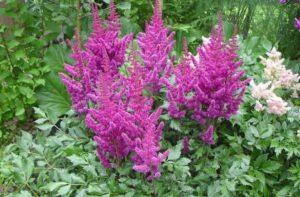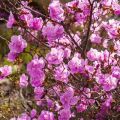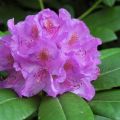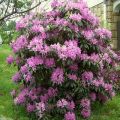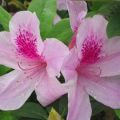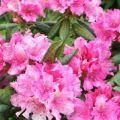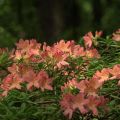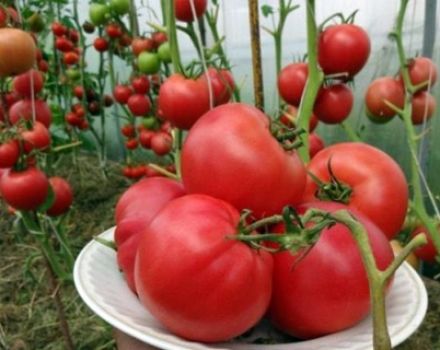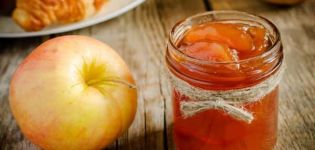Description and characteristics of Schlippenbach's rhododendron, planting and cultivation
Rhododendron is the perfect plant for a shady garden. Unlike many crops, it does not require an abundance of sunlight to bloom. In Schlippenbach's rhododendron, pink caps of inflorescences are formed even before the leaves bloom. A delicate aroma emanates from them. Further, a detailed description of the shrub, the history of its origin, information on planting and caring for the crop in the garden.
Detailed description
The bushes of Schlippenbach's rhododendron, planted in the garden, reach a height of 2 meters. In one place, a culture can grow up to 40 years. For the fragrant pink buds that cover the plant during flowering, it received the name rose tree.
Leaves
Rosettes of leaves are located on the tops of numerous gray branches. Their color changes from a light green palette in the spring to an orange-red range in the fall. The leaf plates are narrow, corrugated, wavy at the edges.
Flowers
Rhododendron bloom begins in late April or early May. The petals of the buds are painted with a pale pink palette. In full bloom, the flowers reach a diameter of 8 centimeters. Long stamens protrude from the core, the ends of which are covered with pollen.
Fetus
Flowering ends with the formation of an oblong box, inside which there are seeds. They can propagate a plant in the garden.
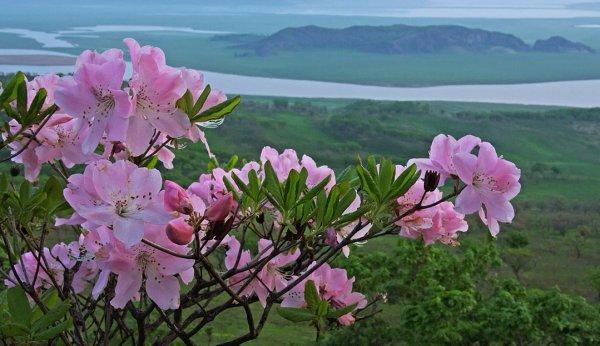
History of origin
The bush got its name in honor of Alexander Egorovich Schlippenbach. An officer of the Russian fleet as part of the expedition passed the coast of Korea. On the slopes, he saw a plant blooming with large pink caps. The officer brought the shrub to Russia, where it has been safely cultivated since 1854.
Healing properties
Rhododendron tea is not only delicious, but also healing. The leaves and flowers of rhododendron contain a large amount of nutrients. For example, vitamin C can help treat colds. Andromedotoxin has a positive effect on the functioning of the central nervous system. A warm drink made from fragrant flowers helps relieve joint, muscle and headaches.
Features of the view
There are many varieties of rhododendron in nature. Schlippenbach is distinguished by an unusual shape of leaf plates, a delicate aroma emanating from large pink flowers.
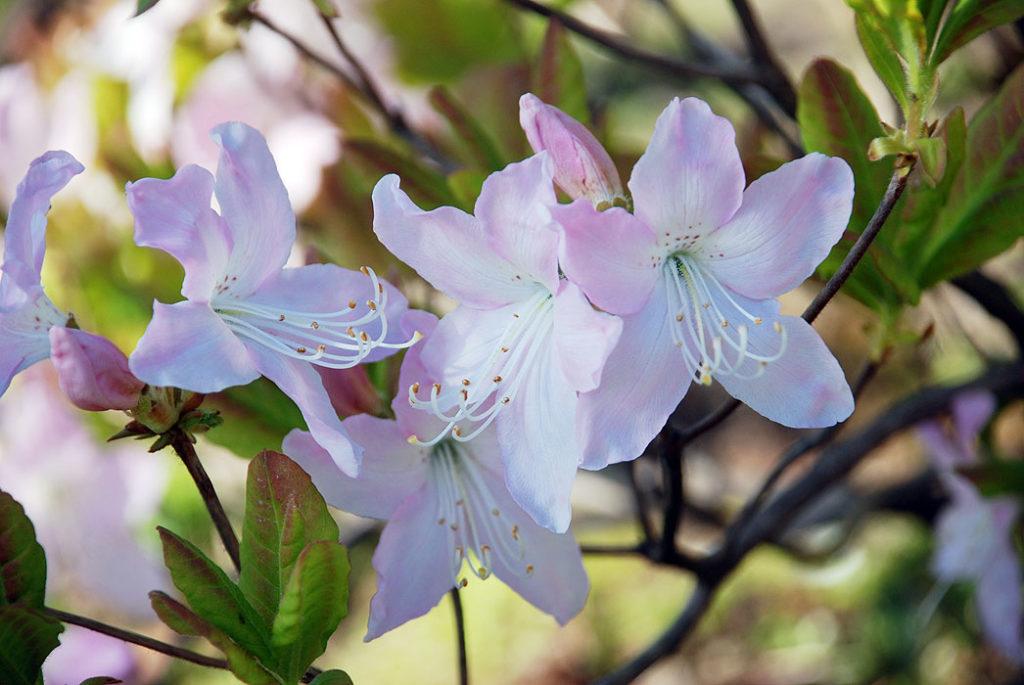
Choosing a landing site
Rhododendron prefers to grow in humid conditions.Therefore, best of all, he will feel planted near a pond, pool. But groundwater should not come close to the ground surface.
Rhododendron is placed in a little shade. The bright rays of the sun have a negative effect on the shrub: the leaves become brown. The area must be protected from cold winds.
Soil requirements
Rhododendron prefers to grow in acidic soil. Therefore, a substrate is prepared for it, consisting of the following components:
- peat;
- compost;
- sod land;
- sand.

Note! Only being in acidic soil will the plant thrive and bloom profusely.
Pit preparation and planting scheme
Rhododendron is planted in a permanent place in spring or autumn. The seedlings are preliminarily placed in a bucket of water for 30-40 minutes. Potassium permanganate is added to disinfect the root system. Landing is done as follows:
- They dig a hole 40 centimeters deep and 60 centimeters wide.
- A small layer of drainage is laid out at the bottom, consisting of expanded clay, small stones. Spruce needles can also be added there.
- The pit is filled with an acidic substrate.
- A seedling is placed in the middle, and the root system is covered with soil on all sides.
- Lightly compact the soil, watered abundantly.
To retain moisture, the root circle is covered with mulching material. You can use the bark and needles of coniferous trees, peat.
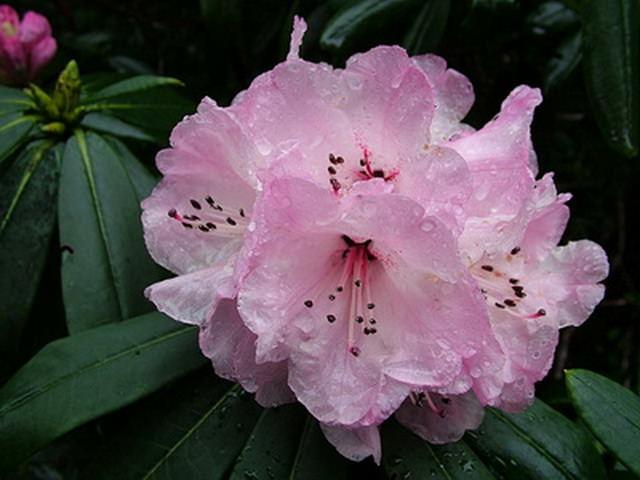
Care
Caring for an alpine rose consists of watering, feeding, pruning.
Watering
The rhododendron needs abundant watering. They use warm, settled water. In the absence of rainfall, the land under the bush is irrigated 2-3 times a week. Periodically use water acidified with lemon.
Top dressing
In early spring, nitrogen is introduced, which promotes the growth of the vegetative mass. The next top dressing is in the spring, after flowering. Mineral substances are used, as well as peat or humus. For a safe wintering of plants, potassium is added in the fall.

Pruning
At a young age, a formative pruning is performed on Schlippenbach's rhododendron. For this, the central shoot is shortened. After that, the rose tree begins to bush. Sanitary pruning is performed in autumn. Remove old, dry, diseased branches.
Transfer
If necessary, the shrub is transplanted in spring or autumn. In this case, you need to try not to destroy the earthen lump. After transplanting, the root circle is watered abundantly, mulched.
Protection against diseases and pests
With improper care, rhododendron can be affected by diseases and pests. To prevent their appearance, the fallen leaves are removed from the trunk circle, and weeds are removed. In the spring, the shrub is sprayed with fungicides and insecticides.
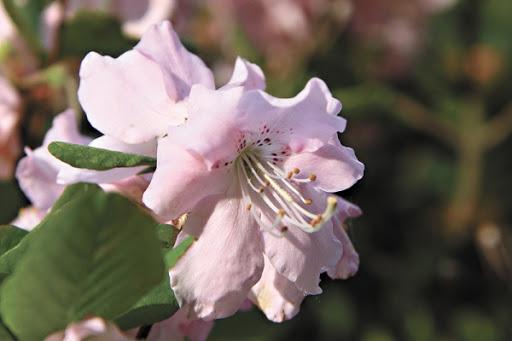
Bloom
For its abundant flowering, Schlippenbach's rhododendron is called a rose tree.
When and how
Culture inflorescences bloom in late spring. Flowering lasts about a month. The buds begin to bloom before the leaves are formed. During flowering, a delicate aroma emanates from the bush.
Care before and after
Before budding begins, the shrub is fed. Throughout the season, the plant is watered abundantly. After flowering, the dried buds are removed, the shoots are slightly shortened.
What to do if it does not bloom
If the rhododendron isn't blooming, it's probably not planted in the right place. In spring or autumn, it is dug up, transplanted into acidic, loose soil. The best place is partial shade.

Reproduction
Rhododendron is bred with seeds, cuttings, layering.
Cuttings
For reproduction, the apical cuttings are cut 15 centimeters long. They can first be placed in water for rooting, or they can be planted directly in a container. Young bushes are planted on the site after a year.
Layers
The procedure for reproduction by layering is carried out after the flowering of the rhododendron.To do this, perform the following actions:
- dig a groove 5-7 centimeters deep;
- bend the shoot to it, fix it with wire brackets;
- watered, covered with earth.
During the season, the layering is looked after: watered, loosened, weeds are removed. When the root system is well formed, the shoots are separated from the mother plant. Young bushes are transplanted to a permanent place.

Growing from seeds
Schlippenbach's rhododendron seeds have good germination, so gardeners often use this method for propagation. The cultivation procedure is performed as follows:
- loose soil is poured into a container with low sides;
- sprayed with water from a spray bottle;
- seeds are placed on the surface of the substrate, slightly pressed;
- cover with transparent film;
- the container is placed in a warm place.
When shoots appear, the film is removed, the container is placed in a cooler place. After the formation of the 2nd pair of true leaves, a pick is carried out. For this, young plants are transplanted into individual pots. In the spring, the bushes are planted on the site.
Prevention of various problems
To prevent fungal diseases, rhododendron is sprayed with preparations containing copper before and after flowering. Foliage is removed from the trunk circle, in which pest larvae can hibernate. In the summer, the shrubs are periodically sprinkled.
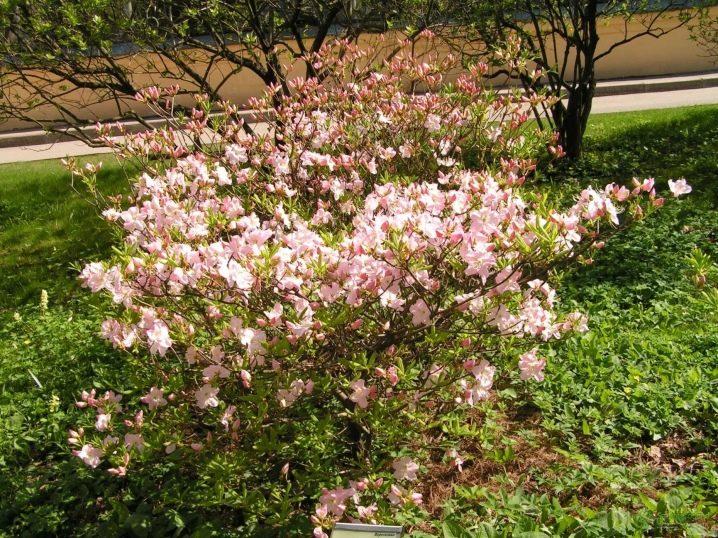
Important! Plants are sprayed from diseases and pests with special preparations before and after flowering.
Use in garden design
Schlippenbach's rhododendron is decorative not only during flowering, but also after it. It is planted next to shade-loving plants: fern, host, astilba, buzulnik, badan. The moisture-loving rhododendron will feel good when planting near a reservoir.
Reviews
According to gardeners, Schlippenbach's rhododendron grows short, up to 1.5 meters, and begins to bloom 6-9 years after planting. The buds are large, fragrant, pale pink in color.
Irina, Moscow: “Grew up Schlippenbach's rhododendron from seeds. I kept the plant in a pot for a long time. As soon as it was planted in open ground, it immediately began to gain vegetative mass. Bloomed with pink large caps in the 9th year after the emergence of the sprout.
Ivan Petrovich, Petrozavodsk: “My Schlippenbach rhododendron grows in partial shade from the apple tree. So far, his height is a little more than a meter. When landing in the pit, he poured heather soil. Once a month I pour water acidified with lemon. The shrub blossomed 6 years after planting. "
